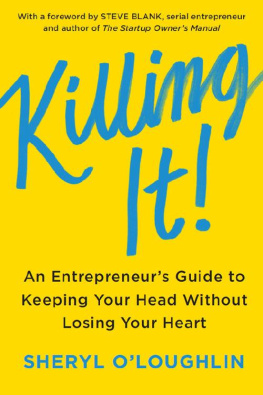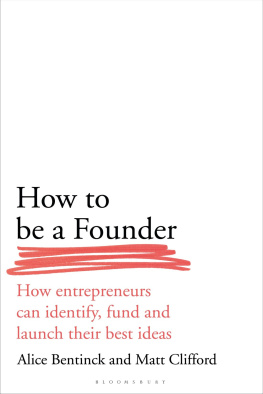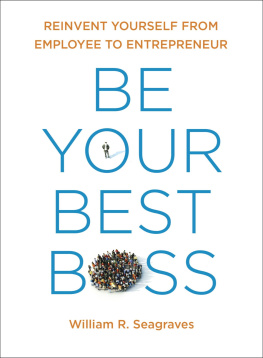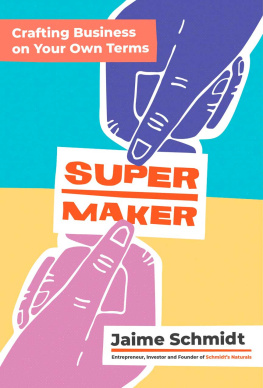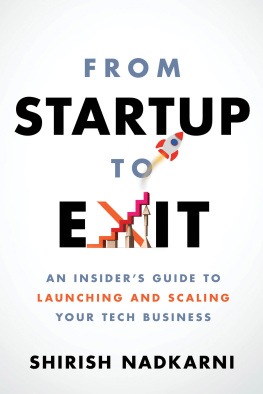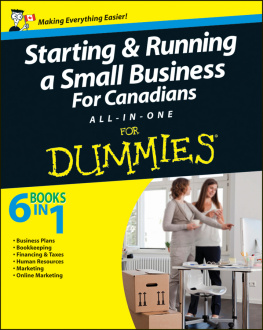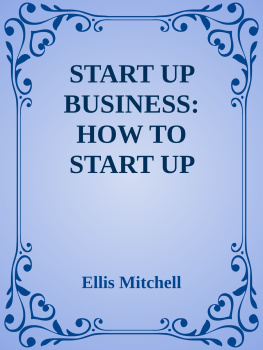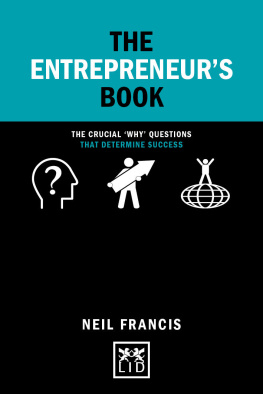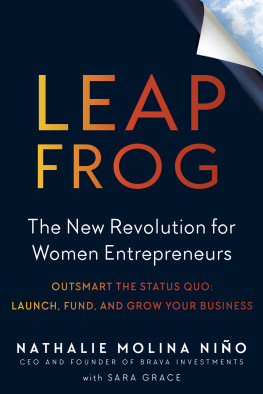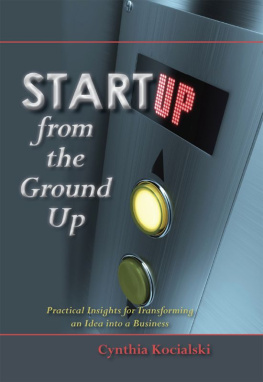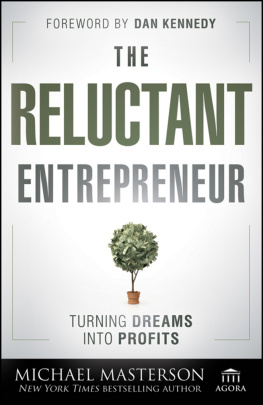To my three guys: My love for you is bigger than the universe.
And to the entrepreneursyou all inspire me with your bravery. Know that Im watching in amazement as you change the world!
S ince flickering torches illuminated the first people who drew on cave walls, there has always been a group of talented individuals whom we call artists. For thousands of years weve recognized that while everyone can learn how to paint, sculpt, compose, and write, there is a subset of those who live their lives obsessed with their art.
Artists suffer through failure and hardships, a perpetual lack of funding, and the derision of others who tell them to get a real job, and they are mostly ignored by those who are comfortable with the status quo. But they push on because they see or hear something that others do not. And their passion for bringing that thing into the world drives them through obstacles long past the point at which someone just wanting a job would have given up.
To those artists, their profession is not a job, its a calling. These artists feel that they have something inside them that they need to express. And they need to share it with others.
Founders fit the definition of an artist: They see something no one else does. Their passion drives them to createsomething others dont yet see. And their passion drives them through obstacles that would stop others who were just doing a job.
Startup founders bring an artists passion and obsession but realize they need to recruit a team to make it a reality. And much like composers recruiting an orchestra, or playwrights hiring a director and actors, they surround themselves with world-class performers. This concept of creating something that few others seeand the reality-distortion field necessary to recruit a team to build itis at the heart of what startup founders do. It requires very different skills than being a solo performer or a scientist at a lab bench, or being a manager in an existing company.
Employees who join an entrepreneurial startup early are the talented performers who hear the siren song of a founders vision. Joining a startup while it is still searching for a business model, they, too, see the promise of what can be and join the founder to bring the vision to life.
Founders then put in play every skill and ability that makes them uniquetenacity, passion, agility, rapid pivots, curiosity, learning and discovery, improvisation, the ability to bring order out of chaos, resilience, leadership, a reality-distortion field, and a relentless focus on executionto lead the unyielding process of refining their vision and making it a reality.
Both founders and entrepreneurial employees prefer to build something from the ground up rather than join an existing company. Like jazz musicians or improv actors, they prefer to operate in a chaotic environment with multiple unknowns. They sense the general direction theyre headed in, and theyre okay with uncertainty and surprises, using the tools at hand and their instinct to achieve their vision. These types of people are rare, unique, and crazy. Theyre artists.
Now that anyone can start a software company on his or her laptop and the Lean Startup has given us a repeatable way of building new ventures, entrepreneurship has become the assumed job-creation engine for the twenty-first-century economy. The assumption is that building early-stage ventures is a science, one that has a set of tools, and that entrepreneurship is simply a job that anyone can do using these new tools.
When page-layout programs first came out with the Macintosh, everyone thought, Now everyone can do design, and that it was going to be the end of graphic artists and designers. Users quickly learned how hard it is do design well (yes, it is an art) and again hired professionals. The same thing happened with the first word processors. We didnt get more or better authors. Instead we ended up with poorly written documents that looked like ransom notes. What we now understand is that tools do not make the artist (or the founder).
Artists lives are a constant struggle with their obsession of creation. This struggle takes a toll on their relationships and their health. And after decades of toil, the result is most artists fail.
Yet even knowing all of this up front, most artists and entrepreneurs, given a choice, would opt to do it againbut next time hopefully healthier and happier. And thats the goal of this book, to acknowledge that the culture of entrepreneurs, just like that of artists, has the same serious drawbacks for its participants health and relationships.
We cant make the drive for creation less obsessive, we cant guarantee that the journey will end more successfully, but if we talk up front and honestly about the trials and tribulations of founders, we can end up with healthier teams and companies.
Sheryl has the battle scars to tell this story from a founders perspective. Reading this book will help entrepreneurs prepare for a healthy journey that maximizes their joys and minimizes the hardships and heartaches that come with this all-consuming calling.
STEVE BLANK
M y day may sound familiar to you, or maybe its the kind of day youre anticipating once you start your business. Im the CEO of REBBL, a growing beverage company with a social and a health mission. Were a pretty small company right now; we have seven employees, and many of us work remotely. Consumers are starting to take notice of REBBL, though. I know this because I began my day today by looking at the monthly sales data and marveling at the steep climb weve accomplished over the past twelve weeks. In the last two months, Ive heard many more consumers say, REBBL? I love REBBL. It still astonishes me every time I realize that people actually know our product. It seems like were hitting an early-stage tipping point.
Breaking me out of my good-news glow comes a call from our VP of operations, Librado. Sheryl, it looks like we might not make our second-quarter margin, he says in his calm, measured tonethe same tone he maintains whether the news is bad or phenomenal. In this case, it is bad news. REBBLs brand might be trending in a great direction, but this development could cut our cash runway shorter than wed originally planned. If we dont hit our margin, it will have a ripple effect on our cash needs and increase the urgency to fundraise, just six months after we closed our last round of financing.
All right, lets figure out a plan, I say as calmly as I can, and we talk about what steps well take. We brainstorm some options to close the gap and agree to formally get the team together for open, honest, thoughtful conversation, and to prepare our course of action.
A few minutes later, Rachel, our community manager, emails me about some product inconsistencies that a few consumers have been calling and emailing about. At REBBL, were committed to using organic, real-food ingredients, which is critical to our values but can be challenging to our consistency from bottle to bottle. We have to keep innovating so that we can get the predictability consumers want without sacrificing our standards. My conversation with Rachel underscores the need to solve this quickly. As soon as I hang up with Rachel, Im on the phone with Palo, our chief innovation officer, to see if we can speed up our work to address the issue.
As I talk to Palo, a text comes through from Mike, our director of sales, to tell me that weve secured a new retail account, our first mainstream supermarket account. Awesome, I text back, keep up the great work. Librado then calls back to tell me one of our copackers wont be able to meet our production schedule. We need product in a month, but they cant run us until six months out! Our team is pushing back hard, but to no avail. Librado and I discuss an alternative approach.

